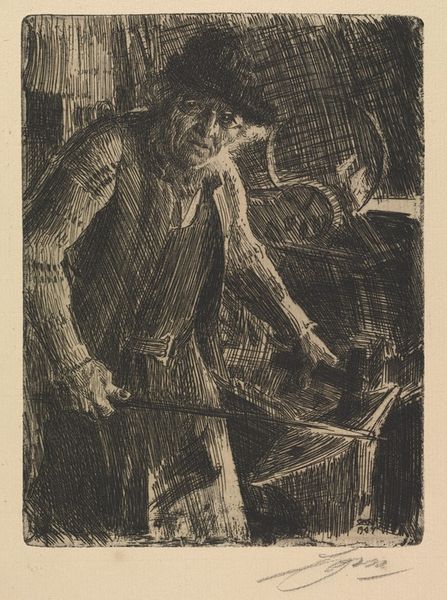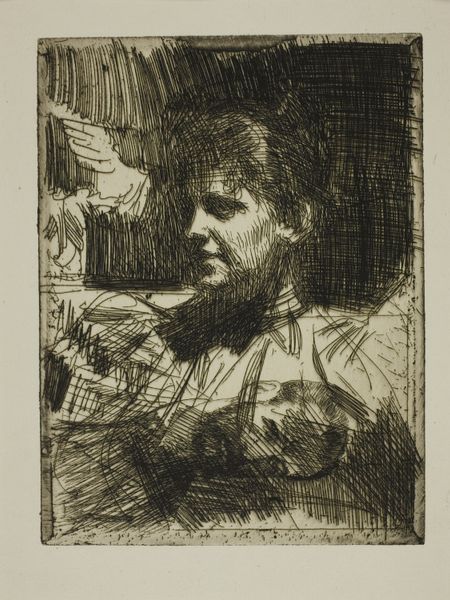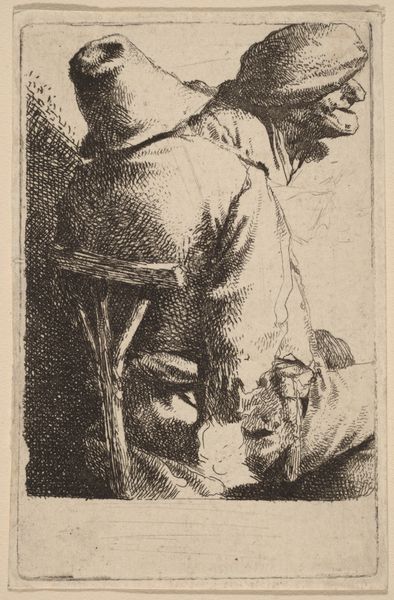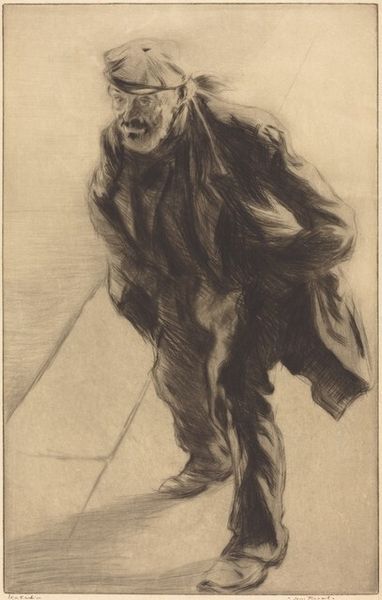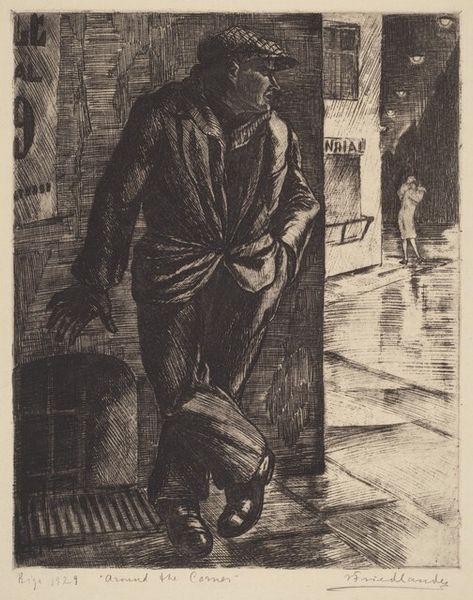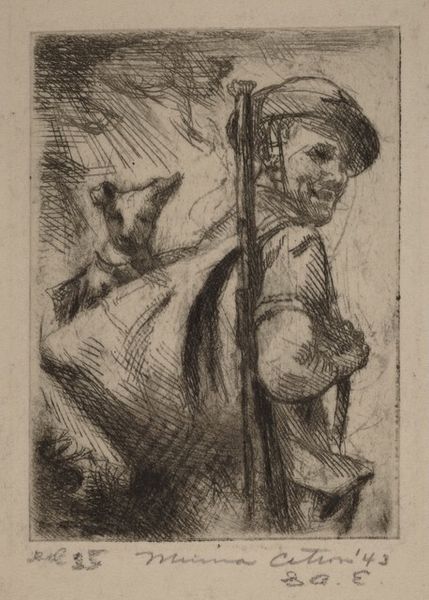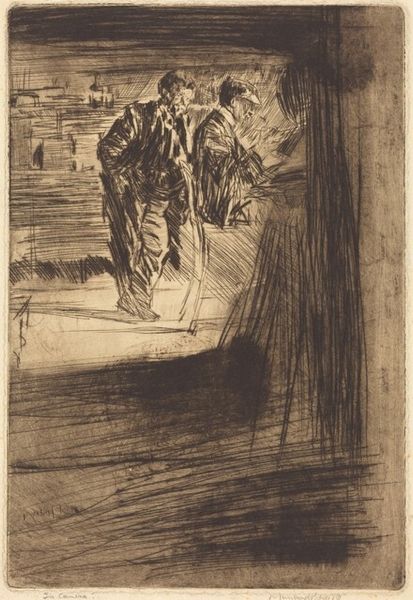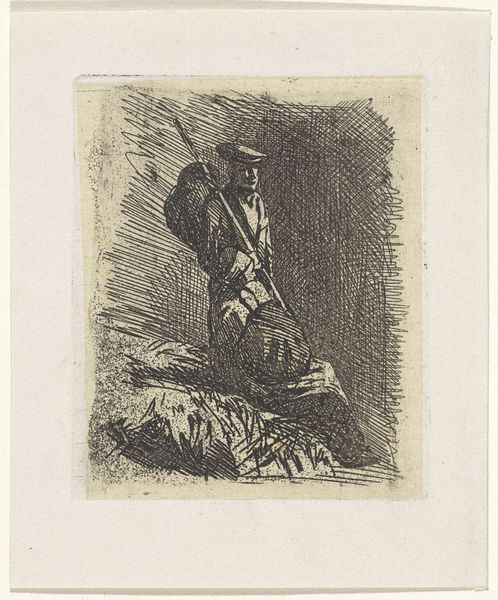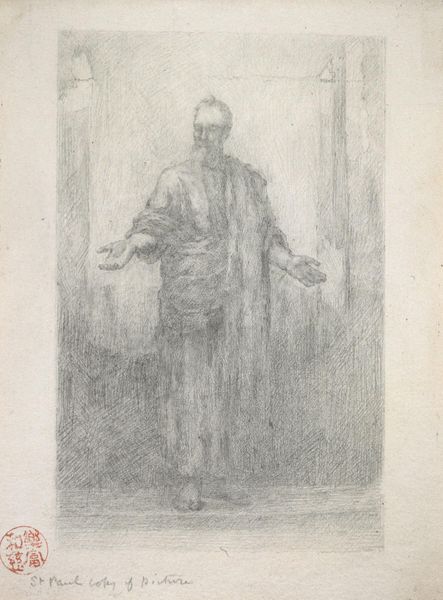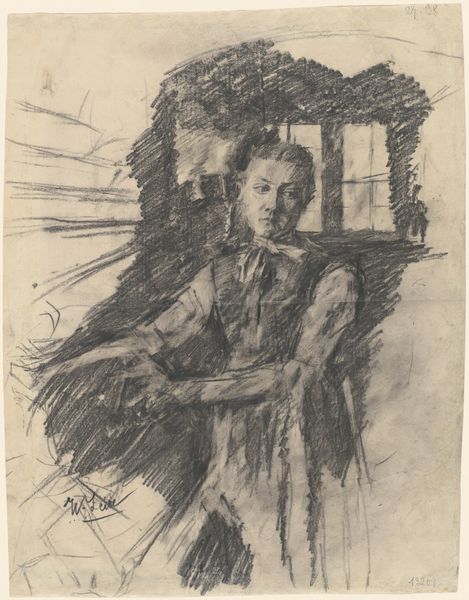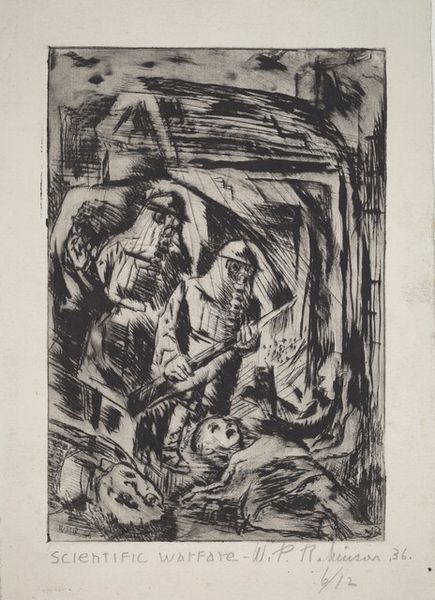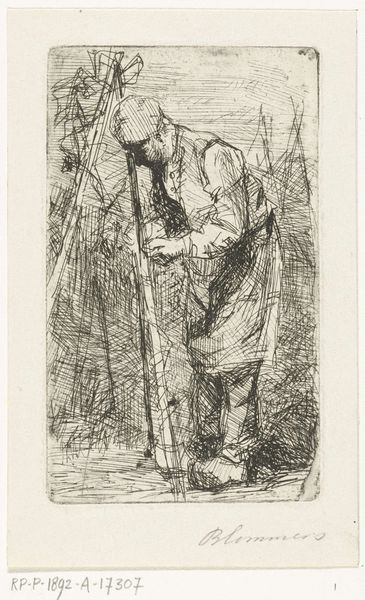
Copyright: Public Domain: Artvee
Curator: Right, let's turn our attention to this intriguing etching by Anders Zorn, titled "Portrait of the Artist and His Model," created in 1899. It’s a wonderful example of his work in the medium, a self-portrait paired with the figure of a female model. Editor: The first thing that strikes me is how gestural it feels for an etching. The light and shadow almost flicker—evoking a sense of movement despite the static medium. The male figure looks sturdy, while the model is almost an ephemeral vision in the background. Curator: Absolutely. Zorn was a master of suggesting form and atmosphere with a surprisingly economical line. There’s a definite contrast in how he treats the two figures. He presents himself as grounded, with a strong jawline and defined features, whereas the model is sketched in quickly, as if captured mid-movement. He has a playful air of self-deprecation too, with that subtle glint in his eye! Editor: The positioning also speaks volumes. The model almost melts into the background, which raises questions around the male gaze. Zorn presents himself, the artist, as central and actively observing, whilst the model's figure remains largely passive. It reminds me of broader issues surrounding power dynamics inherent in the artist-model relationship, often reflected throughout art history. How are women seen rather than seeing, etc.? Curator: Interesting point. Certainly, it mirrors traditional hierarchies, although Zorn's representation feels less overtly objectifying compared to some of his contemporaries. Perhaps there's a hint of respect and camaraderie there as well, embedded in the composition? You see his kit with him, too: palette and the tools of the trade front and center, all playing off of each other. Editor: True, but this doesn't erase the established historical context. What about the very concept of the muse here? What power dynamic exists there, historically and culturally, for the artist? This raises complex concerns about who controls the narrative of artistic expression, and from whose perspective it is voiced. Curator: Good food for thought. Perhaps "Portrait of the Artist and His Model," beyond its technical brilliance and the intimate glimpse it provides into Zorn's studio, serves as a fascinating entry point to conversations about gender, representation, and the act of artistic creation itself. Editor: It leaves you wondering, doesn't it? I like when artwork prompts uncomfortable yet essential questions about art, vision, and their broader sociopolitical reverberations.
Comments
No comments
Be the first to comment and join the conversation on the ultimate creative platform.
